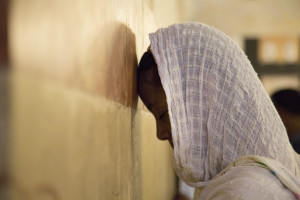In an effort to make the experience of shared sacred sites accessible to new audiences, our team is bringing the Shared Holy Places (lieux saints partagés) exhibit, originally designed by The Museum of European and Mediterranean Civilisations (MuCEM), to numerous cities around the world. The affecting, multimedia exhibit features a variety of digital and traditional works of art and artifacts connected to modern sites where sharing occurs. We hope to communicate the themes of tolerance and understanding through the arts without defaulting to the hollow rhetoric of “a dialog of cultures and religions.” As the French exhibition describes, “it seems vital, amid debates about the clash of civilisations, to demonstrate that alienation and abhorrence of the other are not the required modalities of interaction between the religions of [the] Mediterranean.”
“The Exhibition explores the phenomenon of followers from different communities of faith attending the same sanctuaries.”
Overview
Religious identity is one of the most sensitive issues raised by “living together” in the Mediterranean. Seen in this light, the inland sea seems to be an area of separation and conflict. To each community, their own God, their scriptures, their saints: at worst, these exchanges result in religious wars and the clash of civilizations – at best, they appear exclusively in laborious and sterile in scholarly debates.
A religious phenomenon, little known to the general public, but very present in the Mediterranean, will be brought to the attention of Shared Holy Places visitors: the sacred places shared by the followers of different religions.

The original design of the exhibition was the fruit of several years of scientific research conducted by the Centre National de la Recherche Scientifique (National Center for Scientific Research) and Aix-Marseille University, the exhibition takes a fresh look at the religious behavior of Mediterranean populations and highlights some of the most interesting (and most overlooked) phenomena in the region, namely the sharing and exchange between religious communities. The exhibition focuses its attention on contact situations where sites and figures of sanctity place distinct traditions in communication.
The principle objective of the exhibition is to inform a wide audience about these surprising phenomena that concern, today as in the past, millions of people around the Mediterranean. By introducing the places, figures and practices, the exhibition is designed as an invitation to explore this little known feature of the Mediterranean world.
In the face of rising fundamentalism and exclusivist theologies, new keys are needed for a deeper understanding of the complexity of exchanges between Mediterranean religions. This is precisely what the exhibition aims to offer its visitors.
“Even if the dogmas of the three monotheistic religions seem incompatible, in reality they share biblical figures, saints and sites.”